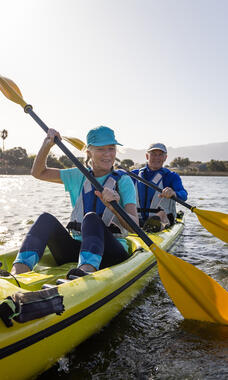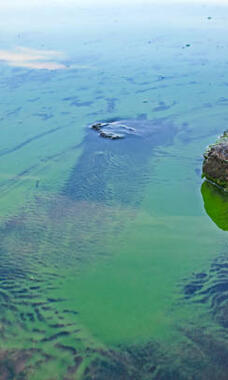Cyanobacteria, also known as blue-green algae, are common in Lake Champlain and other Vermont waters. Some types of cyanobacteria can release natural toxins or poisons (called cyanotoxins) into the water.
The Cyanobacteria (Blue-Green Algae) Tracker allows the public to check recent cyanobacteria bloom reports at shoreline sites and recreational swimming areas of Lake Champlain and various inland lakes in Vermont.
For Immediate Release: July 12, 2024 Media Contact: Ben Truman │ Department of Health 802-316-2117 │ 802-863-7280 [email protected] Health Department Resources and Guidance for Safe Flood Recovery HealthVermont.gov/Flood WATERBURY, VT – As people throughout Vermont begin recovery from yet another...
The Health Department recommends that people limit eating some fish caught in Vermont waters.
For Immediate Release: June 29, 2023 Media Contact: Katie Warchut │ Vermont Department of Health 802-863-7281 [email protected] Peter Isles, Aquatic Biologist Department of Environmental Conservation 802-490-6130 [email protected] Know What Cyanobacteria Look Like This Summer Enjoy Vermont waters safely by avoiding...
Public Health GIS Maps The Health Department supports several web apps that address important public health issues using GIS technology. Some example use cases are: See if cyanobacteria blooms might affect your summertime water recreation plans. Find out if others...
Enjoy Your Summer, Safely Warm weather has arrived in Vermont, and the mountains are lush and green. Swimming, hiking, biking, grilling, sports and even outdoor projects are among the many Vermont summertime activities on our to-do lists! It is easy...
For Immediate Release: May 31, 2023 Media Contacts: Ben Truman │ Vermont Department of Health 802-316-2117 │ [email protected] Mark Bosma │ Vermont Emergency Management 802-839-6717 │ vtalert.gov Scott Whittier │ National Weather Service 802-658-0150 │ weather.gov/btv Unseasonable Heat Expected in...
Vermont's lakes, rivers and swimming holes are an important part of our recreational landscape. Whether boating, swimming or just splashing around, here are tips to safely enjoy water activities.
Stay safe and warm this winter with these tips.




